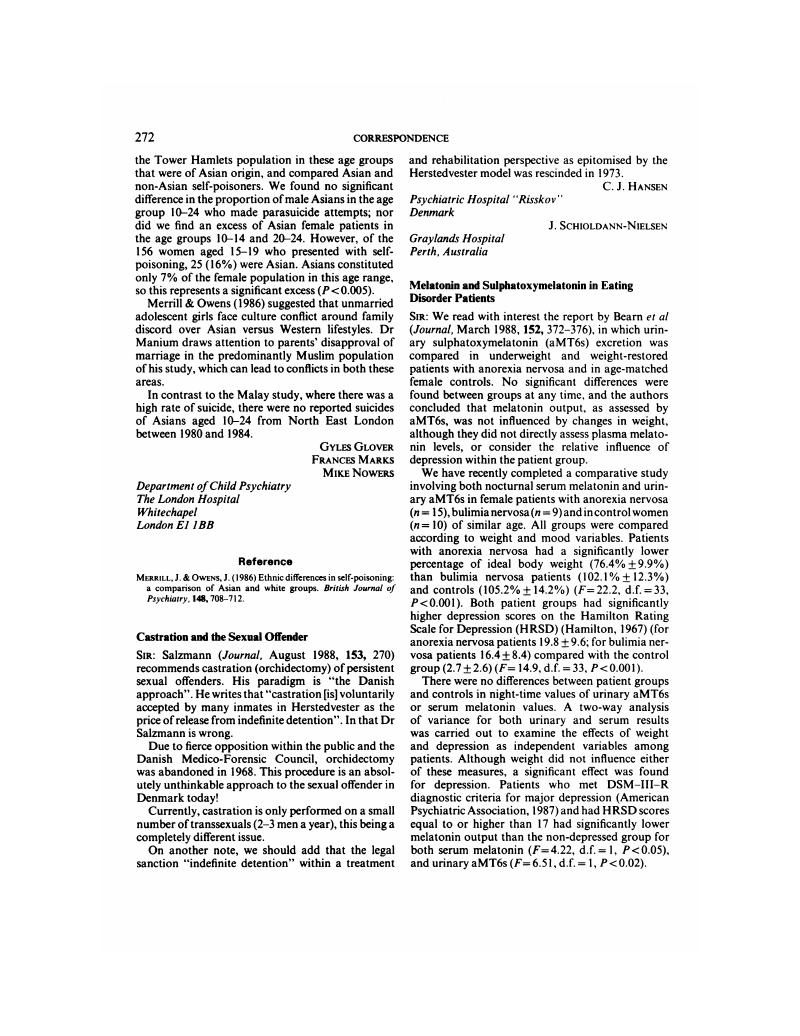Crossref Citations
This article has been cited by the following publications. This list is generated based on data provided by Crossref.
Brown, Gregory M.
Bar‐Or, Amit
Grossi, Doreen
Kashur, Suzanne
Johannson, Erika
and
Yie, Shang Mian
1991.
Urinary 6‐sulphatoxymelatonin, an index of pineal function in the rat.
Journal of Pineal Research,
Vol. 10,
Issue. 3,
p.
141.




eLetters
No eLetters have been published for this article.